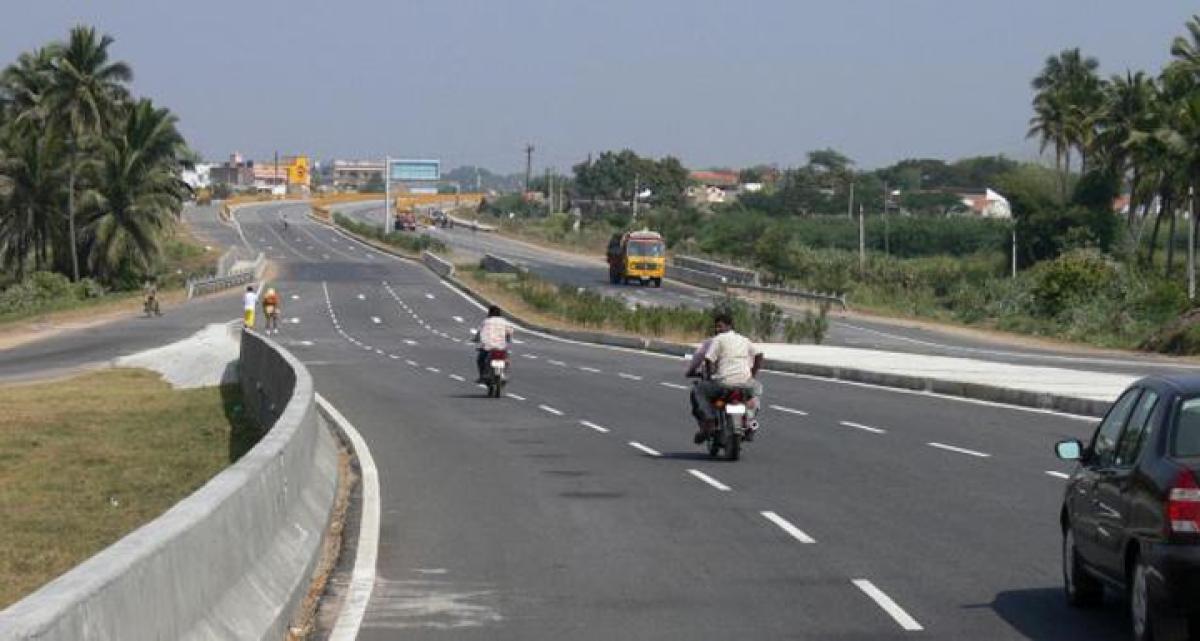Live
- GMR Airports Unveils AI-Powered Digital Twin Platform to Transform Airport Operations
- India poised to become leading maritime player: PM Modi
- Top Causes of Kidney Stones and How to Recognize Silent Symptoms
- India’s renewable energy capacity logs 14.2 pc growth at 213.7 GW
- Winter Session of Odisha Assembly adjourned sine die
- Biden calls Trump's tariff approach 'major mistake'
- After Drama Over Eknath Shinde’s Chief Minister Race, Maharashtra Cabinet Formation Faces New Tensions
- Egyptian FM, Blinken discuss recent developments in Syria
- Iran's supreme leader says Syria's developments result of US-Israeli 'plot'
- Elon Musk to Purchase $100 Million Luxury Mansion Next to Donald Trump's Mar-a-Lago, Report Reveals
Just In

x
Highlights
As roads in cities across the world are getting congested, emphasis is laid on alternative transportation.The Tokyo Metropolitan Government aims to conduct research in order to stimulate and promote the use of boat transportation in rivers and bay area in Tokyo.
As roads in cities across the world are getting congested, emphasis is laid on alternative transportation.The Tokyo Metropolitan Government aims to conduct research in order to stimulate and promote the use of boat transportation in rivers and bay area in Tokyo.

They recently invited guests from tourism agency, press and government sector to join the Orientation Cruise.
Makoto Hori of the Bureau of Urban Development, Tokyo Metropolitan Government, "In anticipation of Tokyo Olympics Paralympics game in year 2020, together with the strong support of Governor Masuzoe, Tokyo Metropolitan Government is currently working together to promote activation of boat transportations in Tokyo City."
The Orientation Cruise was designed to tour around Tokyo to guide each of the attractions.
The cruise started from The Sumida River, Tokyo's most important waterway since the middle ages. The river connects between Asakusa in the north and Odaiba in the south of Tokyo Bay.
There are many differently designed bridges that span the river.
Asakusa district of Tokyo is one of the top-rated tourist attractions. 65 Millions of international tourists visit Asakusa every year.
Located on a bay and having rivers as convenient transportation routes, Tokyo was thrived as "Water City" - For hundreds of years.
Long since it's replaced by the modern day road and train system, Tokyo has now a few water transportations companies that tourists may find useful.
The Water Bus boat services are operating 60 runs per day, but only 3% of the tourists are using waterway transportations.
Through the Orientation Cruise, Tokyo Metropolitan Government is seeking a way to promote waterways, as the enjoyable alternative to trains or subways, for the tourists who are traveling between destinations that are near the water.
Participants were asked to cooperate with the survey after the Cruise.
Alyssa Smith, Project Cordinator, T-MARK Inc., said, "There's so much space out on the water, so it was very calm and you get to see a lot of sights. I thought it was very enjoyable. I think if more people know about it, they would definitely be a good choice for them, it would be very attractive."
The Cruise boat finally arrived at Hamano Rikyu Royal Gardens, one of the traditional and most beautiful Japanese gardens in Tokyo.
Tokyo Metropolitan Government also plans a new pilot program to invite Tokyo's general public for Orientation Cruise in December.
And it's not only water; Japan is making new experiments to improve surface transportation.
Here is, to be precise, not a railway train. It has tires.
It is called an Automated Guideway Transit (AGT) system, a medium-capacity unmanned urban transportation system.
Mitsubishi Heavy Industries (MHI) puts focus on the development of AGT.
The vehicles run on rubber tires, so it's relatively quiet. Also it's compact and lightweight, so it consumes less power.
Its minimum track radius is just 30 meters, permitting turns over road intersections without the nearby buildings being affected.
A track can be constructed above a road that already exists.
There are four features of AGT system.
The first is "Al-fine". By using aluminum alloy with double-skin structure it successfully reduced weight and interior space become wider. And, because no paint is done it has greatly improved its recycling efficiency and shows good corrosion-resistance. It leads to less environmental load.
The second is "G-fit". The design torso angle formed by the backrest and the seat cushioning is set at 15°, providing a greater degree of comfort. Bucket seat backrest embraces and supports body. It also helps to stop the feet from sprawling outward. From these aspects they pursued the best seat for mass transportation.
The third is "T-smover". The bogies are improved and achieved more flexible steering, simpler structure and increased guide wheel longevity.
The fourth is "Detail-ism". By pursuing meticulous design such as the quality of material, molding design and color they keep trying to create better interior space.
Mitsubishi Heavy Industries is positive about overseas development. The newest AGT for abroad is named "Super AGT" that peaks at 120 kilometers per hour.
Masahisa Masukawa, an official of the APM Development Chief Promoter, Mitsubishi Heavy Industries, Ltd., said, "Japanese industrial products for infrastructure often result in high functionality and high prices. But when we introduce to foreign countries we try to be flexible in order to introduce the best suited products in accordance with their needs, economic level and so on."
They propose one possibility of how to use AGT systems that "Super AGT" goes widespread area like connecting cities, and other AGTs for inner-city traffic.
Their AGT systems keep on evolving for the better future. (ANI)

Next Story
More Stories
ADVERTISEMENT
© 2024 Hyderabad Media House Limited/The Hans India. All rights reserved. Powered by hocalwire.com







